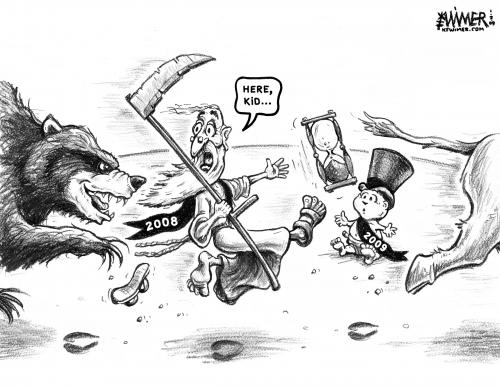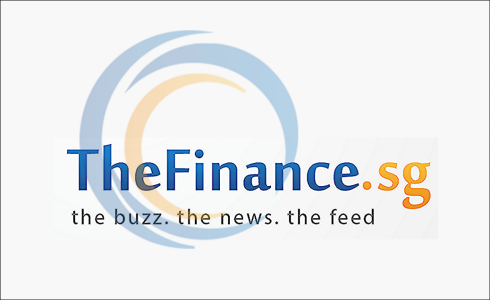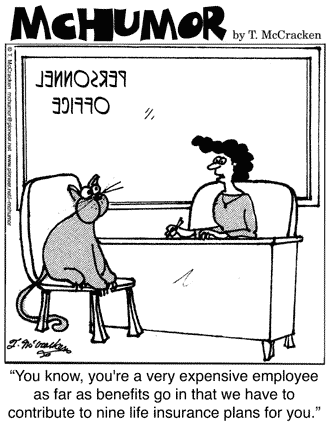I’ve got another request by one of the superfriends to do a review on Celestial. I’ve covered Celestial quite some time ago, around end of 2007 I believe, so I think it’s a good time that I revisit this company again and see what had transpired between then and now.
Celestial is in the business of manufacturing soyabean protein-based food and beverage products and is selling them under its own brand name. They are also entering the biodiesel business which began a trial run last Oct 2008.
For this review, I’m only reading their
3QFY08 results, which they released back in November last year. Here’s a few statistics (based on 9MFY08 data):
Net margins: 22.8%
ROE: 25.7%
Annualised diluted EPS (assuming conversion of bonds to shares): SGD 0.14
Current assets/Current liabilities: 1.3
Total assets/Total equities : 1.73
Total liabilities/Total equities: 0.73
PE (based on today’s price of 0.340) = 2.4x
Here are a few things that I noticed and thought about:
1. Net margins are pretty high at 22.8%. However, compared to FY06, their net margins are at 31.9%. Even last year’s net margin was at 23.3%. We are definitely seeing some trends in the erosion of their net profits. I’ll say they are being held hostage by the high prices of soya bean. This can be seen in their Cost of good sold (COGS) as a percentage of their revenue. Since the last time I tracked this, their COGS (as a % of revenue) had increased from 55.7% in FY06, to 61.0% in FY07 and to the present 64.9% for the 9 months into FY08.
This is something that they have not much control on. I’m not sure if they hedge the price of soya beans purchased with something like a commodity futures contract, somewhat like what SIA did to lock in future oil price.
2. Other expenses like distribution costs had also shot up sharply. We’re talking about close to 50% rise in 3Q08. Not sure how they distribute their products, and not sure if it’s linked to oil too. But I do know that Celestial needs to do more to control their costs, which are already eating up their once very healthy net margins.
Considering that their net margins are so easily eroded within a span of 3 years, perhaps they do not have much of an economic moat. That being said, a net margin of 20 % plus is nothing shameful.
3. They have been easing down on their financial leverage since I began tracking it. Their financial leverage (defined as total assets/total equities) went from 2.17 back in FY06 to 1.99 in FY07 to the current 1.73 in FY08. The secured borrowings they had made back in FY07 had been fully paid up, leaving SGD 243 mil unsecured borrowings to be payable within one year or less (as at 30th Sept, 2008). This is from the zero coupon convertible bonds issued on 12th June, 2006, with a maturity of 5 years i.e. 12th June, 2011.
The price of the conversion of the bonds to share was adjusted to $2.47 per share. With the current crisis looming and the low share price of Celestial (last transacted at $0.340), I doubt if many shareholders will want to convert their bonds to shares, especially when the conversion price is like 7+ times more than the current share price.
They mentioned that if the bondholders held on till maturity (i.e. June, 2011), Celestial have to pay 129.263% of the principal amount (S$235 mil) by then. This means that Celestial will have to cough up nearly SGD 303 mil (RMB 1,515 mil) in 2011, assuming none of the bondholders convert to shares. That is a potential time bomb waiting to explode.
They did, however, have cash/cash equivalents of RMB 1,397 mil sitting at their company’s coffers now. It depends on how wisely they plan to use this amount of cash. Spend it foolishly and they will have to borrow more money to repay the bondholders when it approaches 2011. Would it be easier to borrow money then? I do not have the answers.
4. ROE (annualized) for FY08 is an impressive 25.7%. It’ll be more enlightening to look at the breakup of the ROE and tracking it over the years, since I have the data at hand.
------------------Financial leverage-----asset turnover-----net margins-----ROE
FY2006--------------2.17------------------0.38------------------31.9%------------26.3%
FY2007--------------1.99------------------0.52------------------23.3%------------24.1%
FY2008*-------------1.73------------------0.65------------------22.8%------------25.7%
* FY08 figures are estimated on the basis of the figures given in the 9M into the FY08. I assumed a straight trend leading to 4Q08 and the estimation can be wildly off the actual figuresWe can see from the breakup of the ROE figures how Celestial improves it’s ROE. It is using less leverage (good sign), churning out more revenues per dollar of assets (good sign) but with lesser net profit margins (bad sign). I’ll say that the quality of their ROE is actually better, even though it’s lower than FY06, because it’s not as highly leveraged.
ROE of above 20% is still impressive, at least to me.
4. Current ratio is good at 1.3x, but I’ve no past figures to guide me on this. But let’s look at the absolute figures. They have RMB 1,971 mil worth of current assets, of which 71% consists of cash/cash equivalents. Assuming a bad debt of 50% on their trade/receivables and zero value on their inventories, their adjusted current assets will stand at RMB 1637 mil, which is more than enough to cover all their total liabilities amounting to RMB 1,532 mil.
I think no worries on their solvency in the near term. Of course, if businesses are affected, there’ll be more bad debts, the liabilities will also shoot up…but that will be anybody’s guess.
5. Operating cashflow which is coming in is good. However, one huge figure worries me, which is the amount of cash that flows out due to their investment in their plant, property and equipment (PPE). For the 9MFY08, cash comes in at RMB 380 mil, but flows out at RMB 470 mil due to investment in their fixed assets, and another RMB 160 mil flows out from financing activities. No wonder they need to issue convertible bonds to raise money. I do not know their plans for expansions in the near term…are they going to invest more money into their PPE? If not, things will go fine and they can even give out some dividends and have some remaining to save up for rainy days.
6. The management seems to have prepared for the eventuality of the bondholders redemption in 2011. They are already planning to look into different re-financing options. More updates on this potential time bomb will be given come FY08 full year results, so they say. Due to this, they also chose not to declare any cash dividends for the FY08 – this means next quarter when they close the results of the year, no hope on getting any dividends. This is a prudent and conservative approach taken by the management to ensure the long term survivability of the company.
The new biodiesel business is in trial period, starting last Oct 2008. They are determining the prospect and strategy for this business, so it’s a good idea not to hope for any positive contribution coming from this new business segment.
7. Ultimately, what to do for Celestial? Invest more to average down? Cut loss and move to supposedly more stable blue chips?
At PE of 2.4X, there’s not much expectations for Celestial based on the current price. I’m still worried about how they are controlling their expenses, which is eroding their margins. I do not think Celestial will be one of those companies that will go belly up, unless something drastic happens to the soya bean industry (look at what the milk scandal did to big players like Sanlu and Mengniu). Do take note of the potential convertible bond redemption coming closer to 2011. If bondholders redeem their monies, Celestial will have to seek new financing to pay them. If bondholders convert to shares (possible, but unlikely), there’ll be around 10% dilution to existing shareholders.


















